
Simon the Sorcerer is a 1993 point-and-click adventure game developed and published by Adventure Soft, for Amiga and MS-DOS. The game's story focuses on a boy named Simon who is transported into a parallel universe of magic and monsters, where he embarks on a mission to become a wizard and rescue another from an evil sorcerer. The game's setting was inspired by the novels of the Discworld series, and incorporates parodies on fantasy novels and fairy tales, such as The Lord of the Rings and Jack and the Beanstalk. The lead character's design was inspired by that of the fictional British television character Blackadder, with the character voiced by Chris Barrie in the CD re-release.
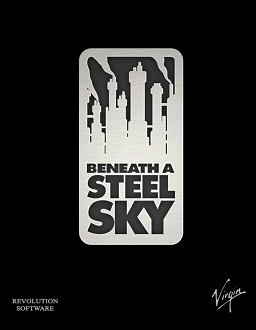
Beneath a Steel Sky is a 1994 point-and-click adventure game developed by British developer Revolution Software and published by Virgin Interactive Entertainment for MS-DOS and Amiga home computers. It was made available as freeware – and with the source code released – for PC platforms in 2003. Set in a dystopian cyberpunk future, the player assumes the role of Robert Foster, who was stranded in a wasteland known as "the Gap" as a child and adopted by a group of local Aboriginals, gradually adjusting to his life in the wilderness. After many years, armed security officers arrive, killing the locals and taking Robert back to Union City. He escapes and soon uncovers the corruption which lies at the heart of society.

MechCommander is a real-time tactics video game based on FASA's BattleTech/MechWarrior franchise, developed by FASA Interactive and distributed by MicroProse in 1998. An expansion pack, Desperate Measures, was released in 1999.

Arthur: The Quest for Excalibur is an illustrated interactive fiction video game written by Bob Bates and published by Infocom in 1989. It was released for the Apple II, Amiga, Macintosh, and IBM PC compatibles. Atypically for an Infocom product, it shows illustrations of locations, characters and objects within the game. It is Infocom's thirty-fourth game and is the second of two Infocom games developed by Challenge using Infocom's development tools.

King's Quest: Quest for the Crown is an adventure game developed by Sierra On-Line and published originally for the IBM PCjr in 1984 and later for several other systems between 1984 and 1989. The game was originally titled King's Quest; the subtitle was added to the games box art in the 1987 re-release, but did not appear in the game.

Martian Gothic: Unification is a 2000 survival horror video game developed by Creative Reality for Microsoft Windows and Coyote Developments for the PlayStation and published by TalonSoft for Microsoft Windows and Take-Two Interactive for the PlayStation. It takes place on a Martian base in the year 2019, where a crew of three have been tasked to investigate 10 months of radio silence. They soon find that the dead crew members of the base have been killed, and now become re-animated bloodthirsty zombies.
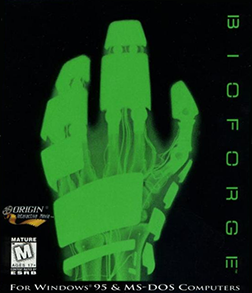
BioForge is a 1995 action-adventure game developed by Origin Systems and published by Electronic Arts for MS-DOS. Set in the future, the player controls an amnesiac cyborg trying to escape the research facility in which they are being held prisoner.

Rama is a point and click adventure game, developed and published by Sierra On-Line, and released on DOS and Microsoft Windows in 1996; PlayStation version was released in 1998, but exclusively in Japan. The game is based upon Arthur C. Clarke's books Rendezvous with Rama and Rama II, combining elements of their plots with a story that sees the player assuming the role of a replacement crew member for an expedition to investigate an instellar ship and uncover its mysteries.

Torin's Passage is a point-and-click adventure game developed and published by Sierra On-Line in 1995. The game was designed by Al Lowe, author of the Leisure Suit Larry series.

MechWarrior 4: Vengeance is a vehicle simulation game, developed by FASA Interactive and published by Microsoft. It was released on November 22, 2000. It is the fourth game in MechWarrior series. It takes place in BattleTech universe where the pinnacle of all war machines are huge, heavily armed robots called BattleMechs. The player pilots one of these "'Mechs" and uses variety of available weapons to battle enemy 'Mechs, tanks and other vehicles. An expansion pack, MechWarrior 4: Black Knight, was released in 2001, and a subsequent stand-alone expansion, MechWarrior 4: Mercenaries, was released on November 7, 2002. Two smaller expansions, Inner Sphere Mech Pak and Clan Mech Pak, were also released in 2002.

Urban Runner is a French produced computer game developed by Coktel Vision and published by Sierra On-line.

MechWarrior 3 is a vehicle simulation game, part of the MechWarrior series. It featured a new 3D accelerated graphics engine at the time of its release. The game contains over 20 missions, with access to 18 different mechs. A novelization called Trial Under Fire was written by Loren L. Coleman.

Police Quest III: The Kindred is a 1991 police procedural point-and-click adventure video game developed and published by Jim Walls and Sierra On-Line. It is the third installment in the Police Quest series. The game finishes the story of police officer Sonny Bonds, who seeks revenge after his wife is attacked by an unknown assailant.
Trecision S.p.A. was an Italian video game developer founded in 1991 by Pietro Montelatici, Fabrizio Lagorio and Edoardo Gervino. The company's headquarters was in Rapallo.
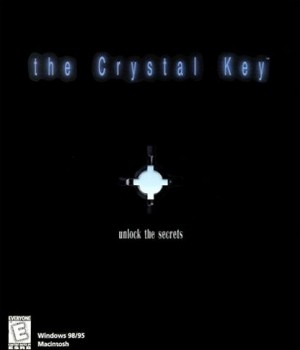
The Crystal Key is a 1999 graphic adventure video game developed by Earthlight Productions and published by DreamCatcher Interactive. A work of science fiction, it casts the player as an interstellar explorer on a quest to save Earth from Ozgar, a malevolent alien conqueror. The player uses portals to traverse multiple planets, including desert and jungle worlds, while collecting items and solving puzzles. The Crystal Key was conceived by John and Jennifer Matheson in the mid-1990s, and it underwent a five-year creation process hampered by problems with its technology. It was signed by DreamCatcher as part of the publisher's strategic push into the adventure game genre.
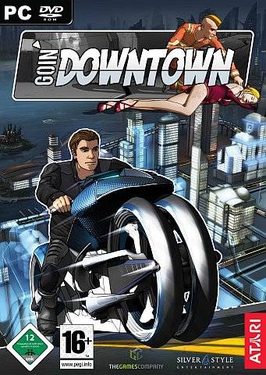
Goin' Downtown is a point-and-click adventure game developed by Silver Style Entertainment and published by The Games Company and Kalypso Media in English. It was released on May 22, 2008 for Windows.

Daughter of Serpents is a 1992 point-and-click adventure game developed by Eldritch Games and published by Millennium Interactive for DOS. The game was released in the English, Italian, French, German and Spanish languages. It was planned to be ported to Amiga by December, but ultimately that was never released.
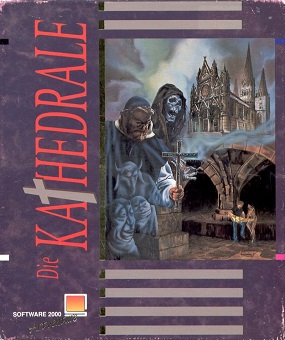
Die Kathedrale is a 1991 German text adventure game developed by Weltenschmiede and published by Software 2000 for the Amiga and DOS. Die Kathedrale is part of a text adventure trilogy; it is preceded by Das Stundenglas (1990) and succeeded by Hexuma (1992). The trilogy lacks an overarching plot, and in each entry the setting, role of the protagonist, and goal differ between each game. Games in the trilogy do not require knowledge of the other entries and may be played as standalone games.
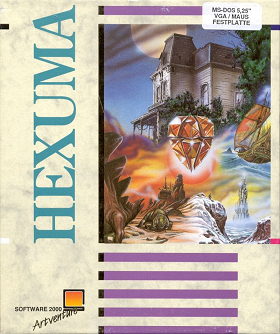
Hexuma, alternatively titled Hexuma: Das Auge des Kal is a German text adventure game published in 1992 by Software 2000 and developed by Weltenschmiede, and released for Amiga and DOS. Hexuma is the last entry in a text adventure trilogy; it is preceded by Das Stundenglas (1990) and Die Kathedrale (1991). The trilogy lacks an overarching plot, and in each entry the setting, role of the protagonist, and goal differ between each game. Games in the trilogy do not require knowledge of the other entries and may be played as standalone games.

Kajko i Kokosz is a Polish video point-and-click adventure game based on the Kayko and Kokosh comic-book series about the adventures of two Polish warriors, the comedy duo of Kajko and Kokosz. The game was released for Amiga in 1994, for PC MS-DOS in 1995, and for PC Windows in 1998. It was the first of several video-game adaptations of the Kayko and Kokosh comics. The game was described as a commercial success, despite receiving mixed reviews.



















